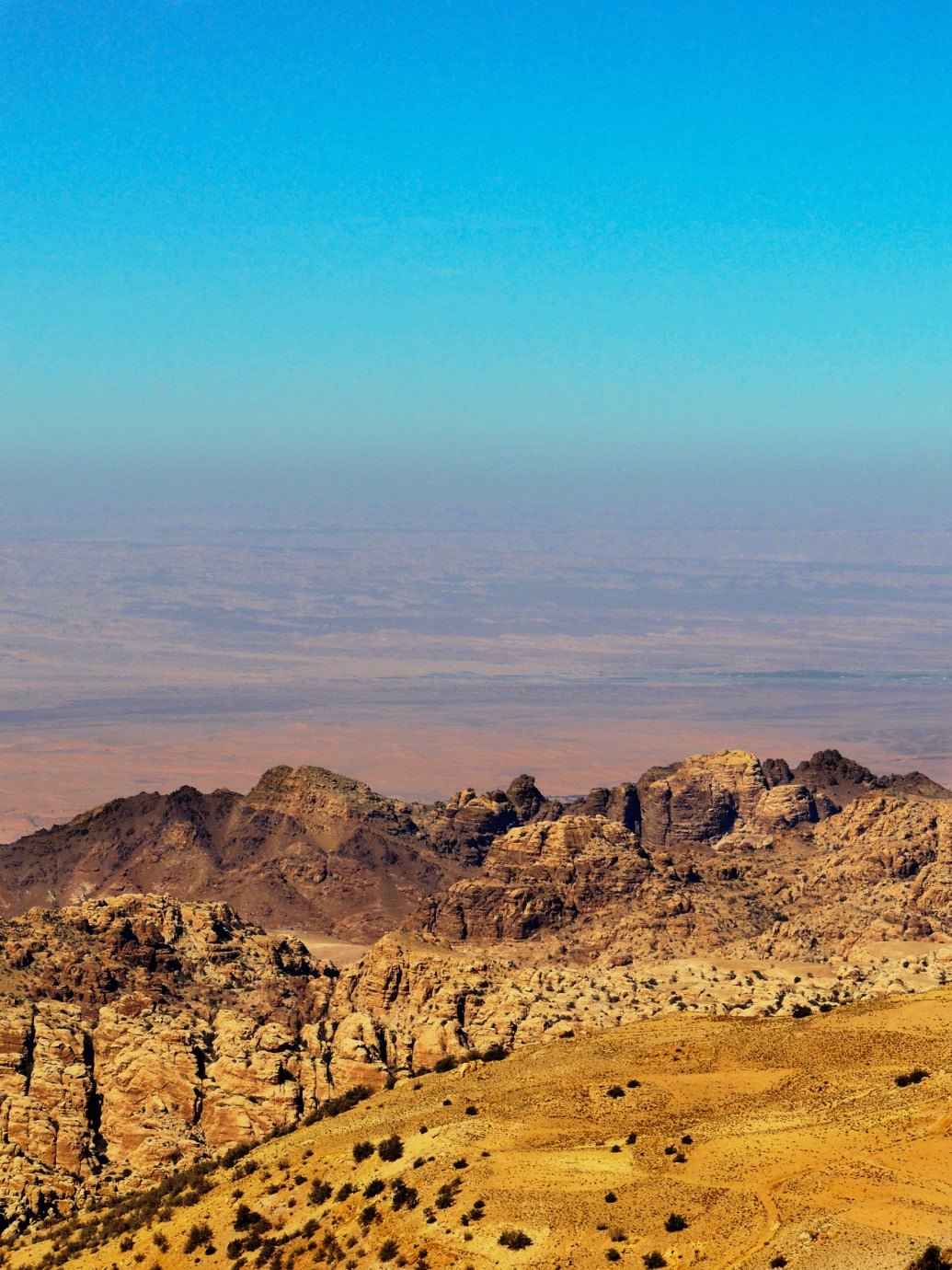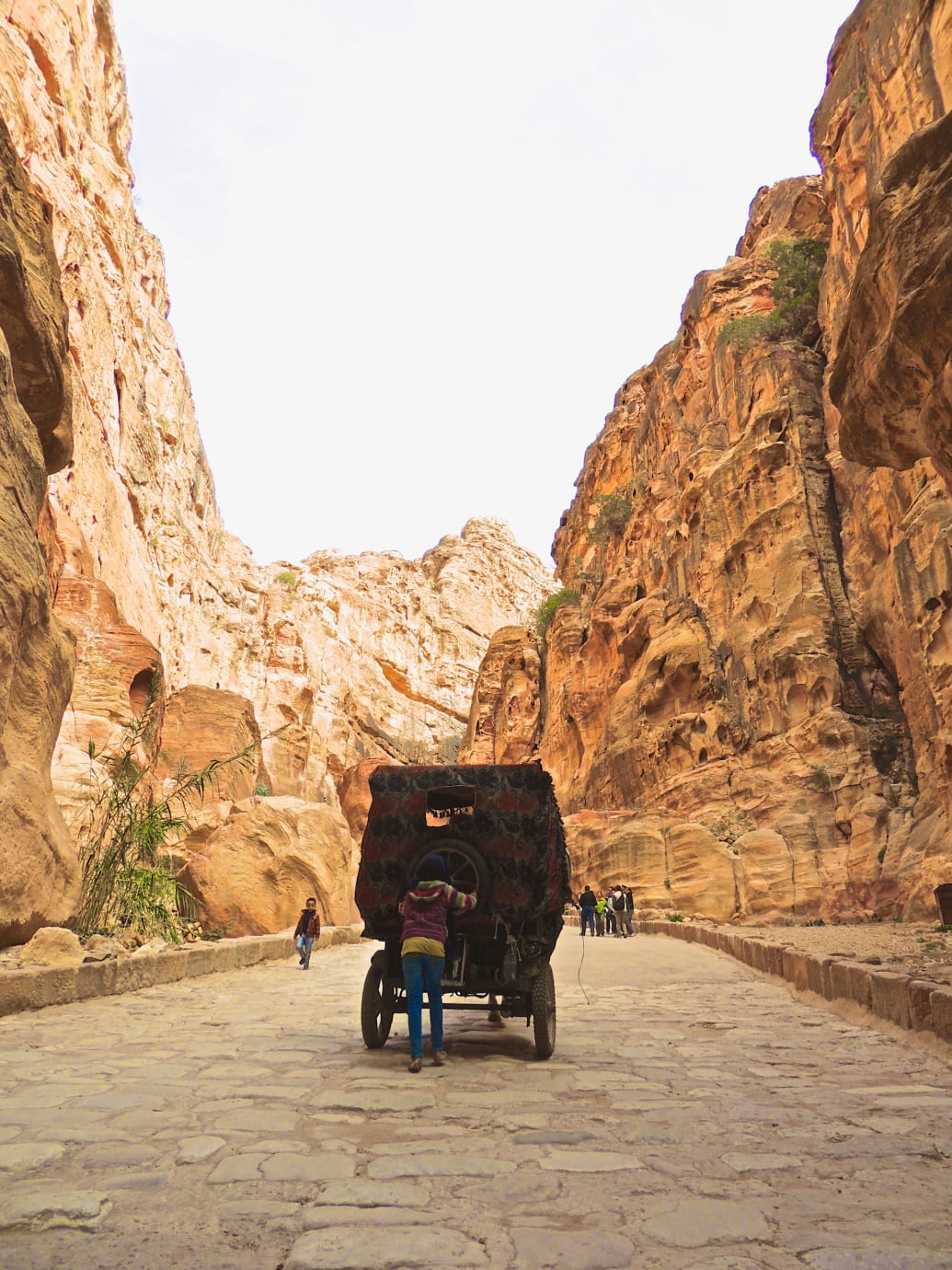My first night in Amman, I met a Jordanian man named Ahmet at a popular outdoor food stand.
It was the kind of stand where you have to push through a crowd and shout your order to the cooks, not knowing if you were heard until food either appears in your hands or doesn’t. There was a one-foot tall step in front of the stand, a tricky obstacle to navigate if you’re in a wheelchair like me. In perfect English, Ahmet offered to place my order for what turned out to be the best shawarma I’d ever had, and while we waited for our food, he told me about how he used to live and work in Houston as a stockbroker.
“Houston?” another man in the crowd shouted as he made his way toward us. “I lived in Houston, too!” His name, as it turned out, was also Ahmet and for several minutes, the two men swapped stories and names of Texan friends to see if they had another connection besides the city in which they’d both lived for a time. Under the twinkling night lights of the city, it was easy to forget talking to these two Ahmets about their lives in America that where we actually were—Jordan—is completely surrounded by devastating war and violence.

Cindy Otis
Just 40 miles away on Jordan’s northern border, the Syrian civil war rages on with more refugees spilling into the country every day. At the time I was in Amman, violence in Iraq was getting dangerously close to Jordan’s eastern border, while to the south, Jordan’s Saudi neighbors had already started fighting in Yemen. On the west, Palestinian refugees have been fleeing into Jordan for decades. While there were few signs of the effect of regional violence on Jordan in the center of Amman, that changed as I passed through the outskirts of the city on my way to the ancient city of Petra the next day.
On the main road out of the city, plastic refugee tents lined the edges on either side. They were stamped with “UNHCR” and many were modified with pieces of sheet metal and rocks, suggesting some tents were more permanent than temporary fixtures. The United Nations High Commissioner for Refugees estimates that 89 of every 1,000 people living in Jordan are refugees, the second highest refugee to population ratio in the world. There are several refugee camps throughout the country of 10 million people, but only twenty percent of refugees live in them, preferring urban environments where they hope to find paying work.
Beyond the city, we were immediately engulfed in a flat, stretching desert so bleak in places that even the refugee tents disappeared. The main road to the town of Wadi Musa where Petra is located is an almost four-hour drive from Amman and a straight shot south. But it is on the side roads where the flat desert turns into stunning mountain vistas where you’ll find ancient ruins like Shobak Castle without the crowd of spectators and breathtaking views of Jordan’s colorful canyons called wadis. Ancient man-made caves dotted the surrounding mountains, making me feel for a moment like Indiana Jones on an adventure, even from my air-conditioned SUV.

Cindy Otis
Built by the Nabataean Empire possibly as early as 5 BC, Petra is one of the most famous archaeological sites in the world and the crown jewel of modern-day Jordan. Without natural resources, like its oil-rich neighbor to the south, Saudi Arabia, much of Jordan’s economy depends on tourism to Petra. The site starts with a brand new visitor’s center built by the United States Agency For International Development to build up tourism. From there, it is a little over a mile through a canyon called the Siq to arguably the most well-known part of Petra, Al Khazna, also known as the Royal Treasury. Locals and Bedouin tribesmen offer horse, donkey, camel, or even golf cart rides through the Siq. I am sure taking one of them would have been a unique experience of its own, but I wanted to soak in every moment of the place we’d come so far to see.
I traveled slowly, my wheelchair bumping along the stones and sometimes getting stuck in the sand. Most other tourists walked quickly past sights like the Obelisk Tomb or the many carvings you’ll find along the Siq walls. These parts are not as well-restored as other parts of Petra, but they are still worth taking the time to discover. There was also something special about taking my time to notice the shifting patterns of the rose-red colored stone walls and to feel every single bump along the route millions of people had traveled before me throughout history. As I moved through the canyon, I spotted statues carved into the rock walls that were mostly worn away except the feet and weathered carvings resembling tiny Petra maps that were not even marked on the actual map I had received at the visitor’s center. If I’d hurried, like some of the rushed travelers in the Siq, I wouldn’t have even noticed them.

Cindy Otis
Bedouin children followed me for a while along the Siq, fascinated by my wheelchair and asking questions in a mix of English and Arabic. A sign in English at the entrance to Petra provided by USAID warns you not to buy anything from these children because they should be in school, not selling things. But I never had to make that difficult choice—the children never tried to sell me anything and followed me out of pure curiosity. Later, the man who drove us to Petra told me these children who live in tents and sell mostly jewelry to help support their large families had never seen an electric wheelchair before, and that my joystick reminded them of the old Atari video game.
As the canyon narrowed, I could feel my heart speed up at my first glimpse between the folds of rock ahead of perhaps the most recognized structure in Petra, the Royal Treasury. The rock walls parted to display the magnificent two-story façade of the Treasury carved into the sandstone mountainside. Archaeologists believe the Nabataeans used Petra as a regional trading hub that became particularly prominent during the Hellenistic and Roman times. The Royal Treasury is evidence of the wealth the Nabataeans garnered up until an earthquake in the 4th Century and a change in trade routes. The city was mostly abandoned by the 7th Century.

Cindy Otis
As I stared up at the expertly restored Hellenistic carvings along the Treasury facade, a Bedouin man on a camel decorated with colorful tassels and jingling bells trotted by me and jokingly offered to trade my wheelchair for his camel.
“I think your ride is better suited for the sand!” I called back, making the man laugh long and hard as he moved down the Siq.

Cindy Otis
Petra’s archaeological site is spread out over 102 square miles and beyond the Treasury lay dozens of temples, tombs, and a theater carved into the mountains. Yet after centuries, archaeologists are still working to uncover Petra’s history and its secrets, believing that up to 85 percent of the city still lies somewhere beneath rock and debris. In 2016, archaeologists discovered a graveyard under the Treasury and an Olympic pool-sized base of another unknown structure nearby.
Back in the town of Wadi Musa after several hours of exploring Petra, I waited outside a café for a dinner to eat on the drive back to Amman. Rose-colored Petra sand coated my skin, hair, and wheelchair. Petra seemed relatively busy with tourists that day, but the town was oddly quiet.
“Are you worried about the war in Syria spilling over into your country?” I asked the man who drove us to Petra and back as we waited.
“Not at all,” he replied immediately. “I’m worried about our economy and if my children will be able to find jobs after they graduate so they can have families of their own. I’m not worried about the war.” He waved a sweeping hand at the empty outdoor café in front of us. “But I am worried about this. These cafes used to be full and hotels used to be booked. It’s very safe here, but tourists don’t think it is.”

Cindy Otis
There is an admirable determination to Jordan and its people that I discovered as I explored the country. Despite earthquakes, changing trade routes, and the rise and fall of nations, Petra still stands. Nowadays, Jordanians are divided by family tribes, but it is the support from those tribes that keeps the country together politically and the government’s parliamentary constitutional monarchy led by King Abdallah II afloat. Jordan is one of the few countries that missed much of the upheaval during the Arab Spring. There were protests, but while Jordan’s neighbors were cracking down and stoking violence, the Jordanian government let the people speak. But Jordan has not escaped the consequences of the many travelers who unfairly lump the whole of the Middle East together under one category—too dangerous to visit.
I had spent years reading about Jordan before I ever visited it in person, but none of the books or articles I read ever truly captured how it felt to actually be there. It was more than just standing in front of ancient ruins I’d only ever seen in pictures. Jordan has a much longer history than my own country and everything from its main language to its topography is different. Yet during my stay there, I felt this overwhelming sense of connectedness and community among its people. Even with war and violence so close by, the people worried about the same things I did—family, careers, finding love.

Cindy Otis
For weeks afterward, I found Petra’s rose-colored sand in the cracks and crevices of my wheelchair. Eventually I would find it all and wipe away the traces of the hours I spent exploring the rocky city, but I’ll never be able to brush off the impact my time in Jordan had on me.

